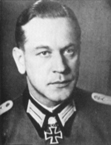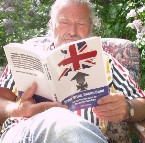m10bob
Posts: 8622
Joined: 11/3/2002
From: Dismal Seepage Indiana
Status: offline

|
quote:
ORIGINAL: warspite1
quote:
ORIGINAL: Leandros
quote:
ORIGINAL: m10bob
God only knows how they might have fared if Mac had deployed (or even USED) his planes once they knew the war had started.
They were deployed - and used...... ...from where do you have that funny notion that they weren't...? ...from where do you have that funny notion that they weren't...?
Fred
warspite1
I posted a question on this a while back but no one responded - so perhaps you can shed some light on it?
In a number of books - inc Rising Sun, Falling Skies - the story seems to be that MacArthur suffered some kind of breakdown and went missing in the crucial hours after the Japanese started the war. As a result much of the US aircraft were destroyed on the ground; he also apparently refused to authorise the bombing of Japanese airfields.
This is correct..The disaster was so terrible a true hero, Colin P Kelly (a real hero), had hsi true accomplishments "embellished" by the press and rather than holding his B17 up allowing his crew to parachute, the tale was told that in his last moments he sunk the Japanese battleship Haruna.
The public believed it..they NEEDED some heroes right then, with so many of our so-called military "leaders" faltering and stumbling..
In spite of orders to disperse the very air force Mac had fought so hard to assemble..he had them tightly parked,wingtip to wingtip, (even on at least one golf course)..All the same, hours after Pearl was reported bombed...in a whole different time zone....with Mac's commanders BEGGING to be given orders, Mac refused to release the planes.
This is documented on so many levels I find it somewhat incredible anyone on THIS forum would not be aware of it??
Where did I get this notion?..
Damn near any history book on the subject indicts MacArthur on this failure alone.
FWIW...I admire MacArthur..(my dad loved him in Korea)....but we all make mistakes..
http://www.militaryhistoryonline.com/wwii/articles/macarthursfailures.aspx
"On December 8th the air raid sirens began blowing. After several minutes we heard the Japs had bombed Pearl Harbor. Expecting to be hit next the Cavite Navy Yard and all the airfields in the area were immediately put on alert and air raid drills were practiced night and day.[40]
Although with all the warnings of an imminent attack, the actual Japanese attack on Pearl Harbor had taken nearly all Americans by total surprise. None the least was MacArthur, who when informed of the attack was reported to have exclaimed, "Pearl Harbor! It should be our strongest point."[41] As a seasoned commander and ex-Chief of Staff of the United States Army, MacArthur should have been one of the most stalwarts of the stalwarts in the Philippines. Instead, as Costello states, MacArthur was in an "apparent cataleptic state," and that "The shock of events seemed to have clouded his [MacArthur's] judgment, leading him to believe, according to President Quezon, ‘that the Philippines would remain neutral and would not be attacked by the Japanese.'"[42] Morris supports this when he relates that, "An air of unreality gripped MacArthur at his headquarters in the ‘House on the Wall,'"[43] a penthouse on top of the palatial Manila Hotel built for him by Philippine President Manuel Quezon.[44]
Unlike MacArthur, however, Major General Lewis H. Brereton, Commander United States Far East Air Force, was quick to react. Upon hearing the news of the Pearl Harbor attack, he immediately put his planes on alert and headed for the Manila Hotel. Arriving at MacArthur's headquarters at approximately 5:00 a.m., Brereton requested permission to launch a preemptive strike against the known concentration of Japanese aircraft on the island of Formosa.[45] Unfortunately, the shock and confusion that reigned in MacArthur's headquarters would prove fatal to Brereton's air forces, and the Philippines. As Costello relates, "a fatal paralysis gripped MacArthur's command that morning. His Chief of Staff [General Richard Sutherland] insisted on a preliminary reconnaissance mission because there was little information about what they were going to find to bomb on Formosa."[46]
However, half an hour later MacArthur received a cable from Washington with directions to implement the Rainbow 5 War Plan at once.[47] This should have made it clear to MacArthur that his duty was to attack the Japanese, and General Brereton's B-17s were MacArthur's means of doing so. But Brereton's request was refused. As Major John Mamerow of the Adjutant General's Office, Philippine Department, recalls:
Major General Brereton arrived from MacArthur's headquarters and gave us as much of the story about the bombing at Pearl Harbor as he knew….The next thing I knew we got a call from General Sutherland,…saying the Formosa plan had been disapproved, but to make sure our airplanes were secure.[48]
Meanwhile, the Japanese Navy's 11th Air Fleet and Army's 5th Air Group aircraft, which were planned to have been striking MacArthur's air force, were grounded on Formosa due to ground fog.[49]
Brereton, however, did not give up. According to Morris, at approximately 7:15 a.m., after two hours of waiting for MacArthur to order the attack, Brerenton again went to General Sutherland's office with a prepared strike mission. "After a few minutes, the Chief of Staff came out of the general's office [MacArthur's], shut the door quietly behind him, and turned toward Brereton. ‘The general says "No,"' he said. ‘We must not make the first overt act.'"[50] Apparently, MacArthur's state of shock and cataleptic condition hampered him from realizing that the Japanese had already made the first overt act when they attacked Pearl Harbor.
After receiving a telephone call from General Arnold in Washington telling him not to get his planes caught on the ground like the planes at Pearl Harbor had been, at 9:00 a.m., Brereton scrambled 36 P-40s and all but one of his B-17s to circle the skies aimlessly. It wasn't until forty-five minutes later, at approximately 9:45 a.m., that Brereton finally received phone calls from Generals Sutherland and MacArthur instructing him to send a photo-reconnaissance flight over Formosa and, if the aerial pictures identified targets, a bombing raid later that afternoon. To accomplish this, Brereton ordered his planes to land, refuel, arm, and prepare for the assault. In the meantime, the aircrews rushed to the respective chow halls for a quick meal prior to launching the attack on Formosa.[51]
It was at this vulnerable time, at a little after 12:00 noon on 8 December, approximately eight hours after the attack on Pearl Harbor and after the weather front over Formosa had cleared, that the same Formosa based Japanese aircraft that MacArthur refused to give Brereton permission to bomb, attacked the Philippines. As Private First Class Victor Mapes of the 14th Bombardment Squadron stationed at Clark Field recalls,
About noon the B-17s came in to re-gas. They lined them up on the runway and the crews cut out for chow. I was listening in the barracks to a very loquacious radio commentator…when all of a sudden he said that Clark Field was being bombed….some of us went outside to the back of the barracks. Coming in over the mountains from the China Sea, up in the silvery clouds, were these two beautiful "V" formations of twenty-seven planes each….We had our gas masks with us and were trying to get them on when the bombs began walking up the runway, like a big giant stepping down the line….The fighters came in next and their machine guns were going through the air, cutting all around….Everything was a holocaust. It seemed like it went on forever.[52]
In a matter of minutes, like at Hawaii earlier in the day, nearly all of the American combat aircraft stationed at Clark Field, the vast majority of the aircraft then stationed in the Philippines, were caught on the ground parked close to each other and destroyed in the first waves of Japanese air strikes, along with many of the aircraft crewmen. Although the pilots of the few surviving American aircraft made gallant attempts with some effect, the Japanese aircraft greatly outnumbered and out-machined the overwhelmed American pilots, leaving the skies over the Philippine Islands in nearly uncontested control of the Japanese Air Forces.[53] MacArthur's refusal to allow Brereton to attack the Japanese air bases on Formosa directly led to the American-Filipino loss of control of the skies over the Philippines. "
< Message edited by m10bob -- 3/22/2015 7:48:02 PM >
_____________________________
|
 Printable Version
Printable Version

















 ...from where do you have the funny notion that they weren't...?
...from where do you have the funny notion that they weren't...?  .
.  .
.  New Messages
New Messages No New Messages
No New Messages Hot Topic w/ New Messages
Hot Topic w/ New Messages Hot Topic w/o New Messages
Hot Topic w/o New Messages Locked w/ New Messages
Locked w/ New Messages Locked w/o New Messages
Locked w/o New Messages Post New Thread
Post New Thread